A Tour of London’s Gothic Buildings
For regular readers of our blog, you may have already seen our deep dives into the architectural wonders that London has to offer.
From Brutalist to Art Deco, there is plenty of varying styles to see as you wander through this wonderful city.
Another style that has been loved for centuries is Gothic.
These buildings stand as time-honoured testimonies of artistic brilliance and historical significance.
Gothic architecture, renowned for its grandeur and intricacy, made a resounding comeback during the Victorian era, leaving a huge mark on London’s landscape, and the team at One One One are going to take you on a quick tour across some of the key landmarks now.
Why not jump straight in by checking out the video overview below:
For the blog, let’s start with a quick history lesson.
The History of Gothic Architecture in London
Gothic architecture in London is a fascinating and evolving story that spans several centuries. Here’s an overview of its history:
- Early Gothic Architecture (12th – 13th Century) – Gothic architecture originated in France in the mid-12th century and arrived in England during the late 12th century. One of the earliest examples of Gothic architecture in London is the choir and retrochoir of Westminster Abbey, completed in the 1250s.
- Decorated Gothic (Late 13th – Late 14th Century) – The Decorated Gothic style emerged in the late 13th century and lasted until the late 14th century. This period was marked by a greater emphasis on decorative elements, intricate stone carvings, and elaborate window tracery.
- Perpendicular Gothic (Late 14th – 16th Century) – The Perpendicular Gothic style, which arose in the late 14th century, was the last phase of Gothic architecture in England. It was characterised by strong vertical lines, large windows, and fan vaults.
- The Decline and Gothic Revival (17th – 19th Century) – Gothic architecture gradually fell out of favour in the 16th century, replaced by the Renaissance and later styles. However, interest in Gothic architecture resurfaced in the 18th and 19th centuries, leading to the Gothic Revival movement.
- Victorian Gothic Revival (19th Century) – The Victorian era saw a significant revival of Gothic architecture, led by architects like Augustus Pugin and George Gilbert Scott. This period emphasised the moral and spiritual values associated with medieval Gothic architecture.
- 20th Century and Beyond – In the 20th century, Gothic architecture continued to influence building designs, though in a more subdued manner. New technologies and materials allowed for reinterpretations of Gothic elements in modern buildings (more on this later).
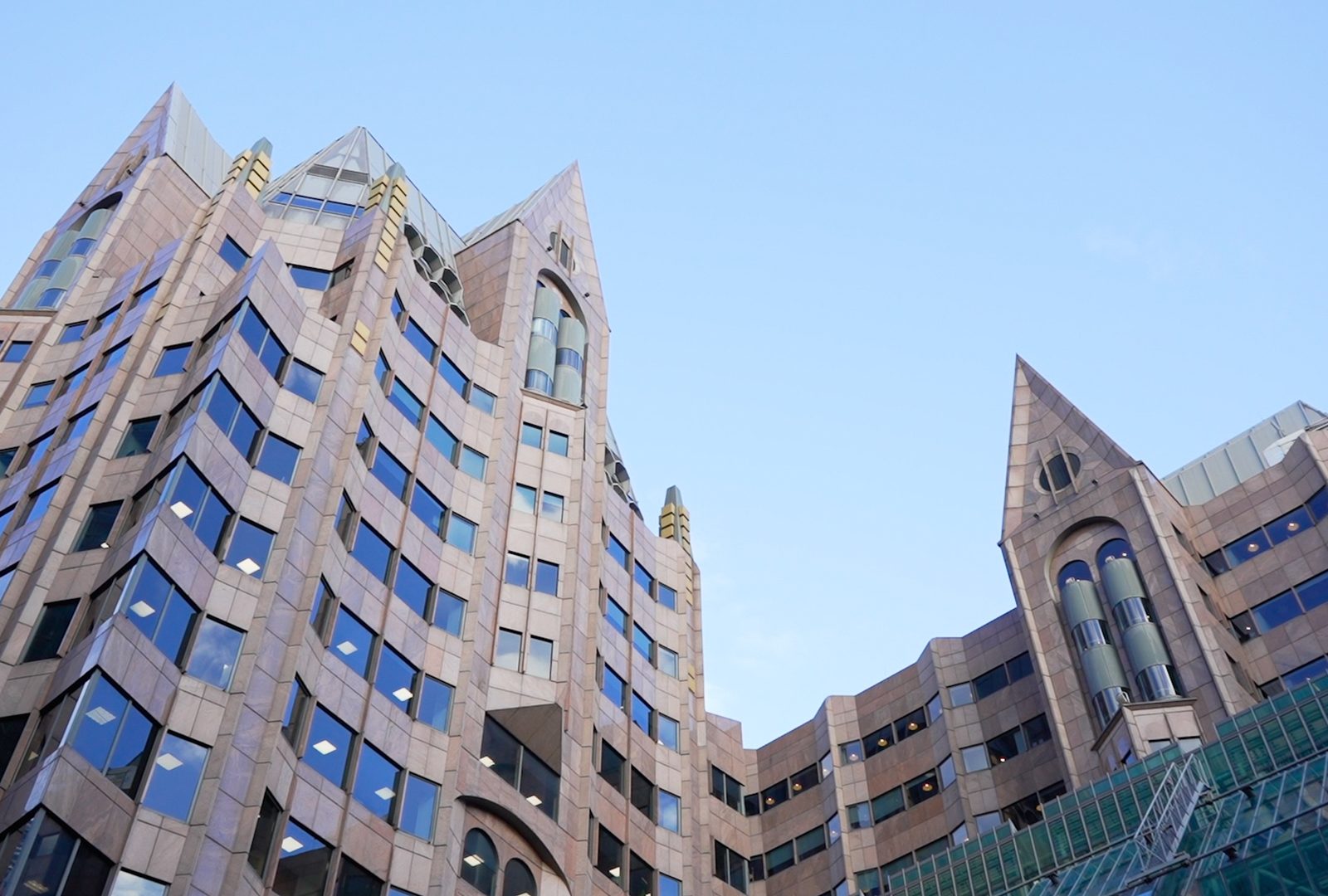
Key Characteristics of Gothic Architecture
Gothic architecture is distinguished by its grandeur and intricacy, particularly in the construction of cathedrals and churches in Europe.
One of the most defining features of Gothic architecture is the pointed arches, which are tall and narrow structures that always contribute to an impression of height and grandeur.
Ribbed vaulting is also a prominent characteristic, featuring intersecting stone ribs that create a framework for the ceiling, allowing for remarkable height and stability, as well as a more decorative design.
Another hallmark is the use of flying buttresses, external supports that transfer the weight of the roof and upper floors to the exterior walls, facilitating taller buildings with larger windows.
This is a running theme throughout gothic buildings, where everything seems stretched out and grandiose, from the high vaulted ceilings to the exterior arches.
There is also a real focus on design, including intricate stained-glass windows, which allowed more light into the buildings and served as a canvas for telling stories and depicting religious scenes.
You may even find some gargoyles and grotesques adorning some of these buildings if you look closely enough.
There is a strong emphasis on verticality in Gothic architecture, often achieved through features like tall, narrow windows and spires that draw the eye upwards. The play of light and shadow is also a significant aspect, with the large windows and interior structures designed to create dramatic light effects.
When all of these are combined, the results are breathtaking, and luckily enough you can see some great examples for yourself right here in London.
A Tour of Gothic Buildings in London
33-35 Eastcheap
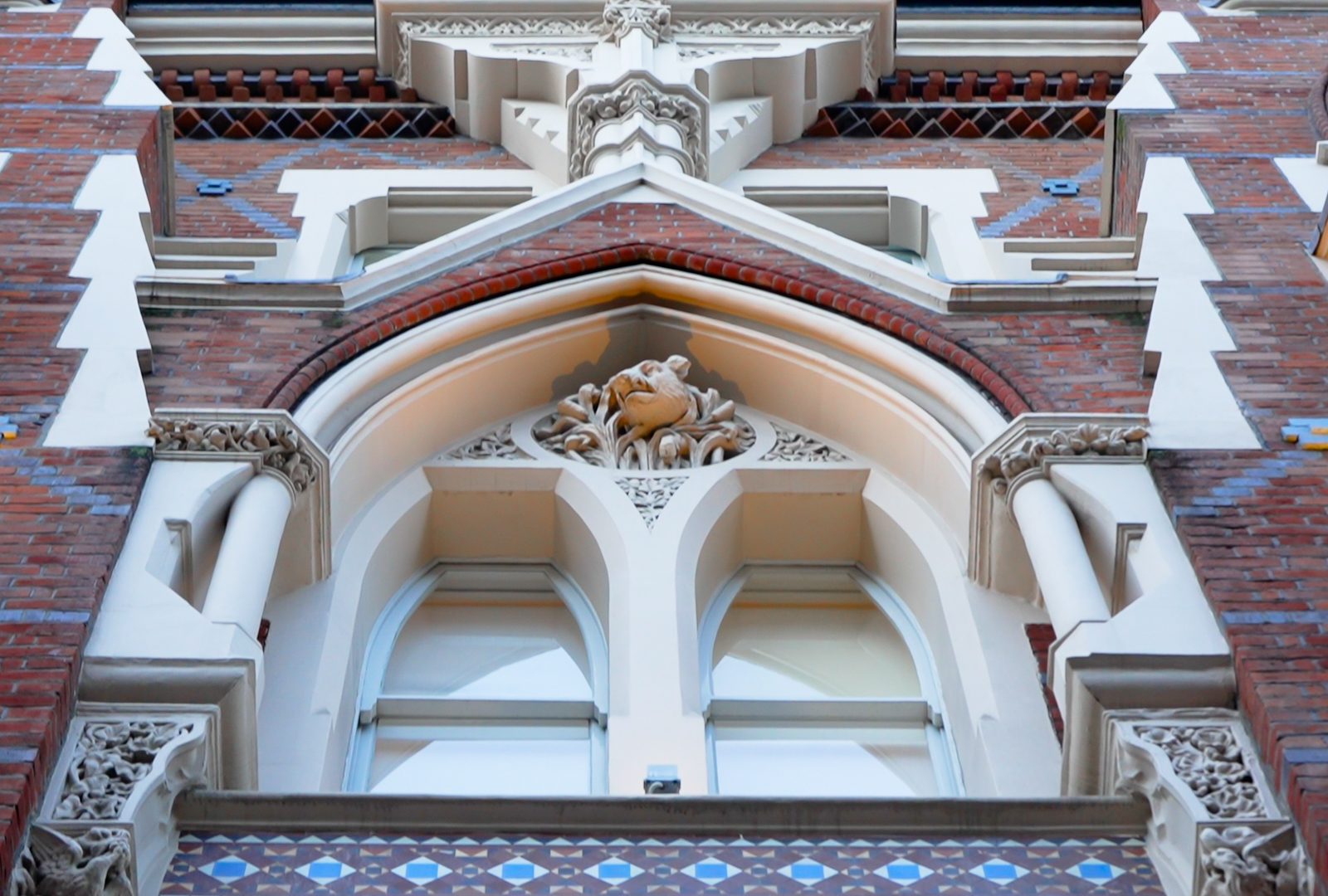
33-35 Eastcheap, once a humble vinegar warehouse, is now one of London’s most enchanting Gothic revival buildings.
Built in the mid-19th century, this structure is a remarkable example of how Gothic architectural elements can transform a functional building into a work of art.
The façade of 33-35 Eastcheap is a visual feast. Gothic arches, intricate carvings, and whimsical figures give it a fairy-tale appearance.
Iconic architect Roumieu‘s attention to detail is evident in every corner, from the ornate window frames to the sculpted animals that seem to spring to life from the stone.
The building is more than an architectural marvel; it’s a piece of history that provides something new to see with every viewing.
Holborn Bars
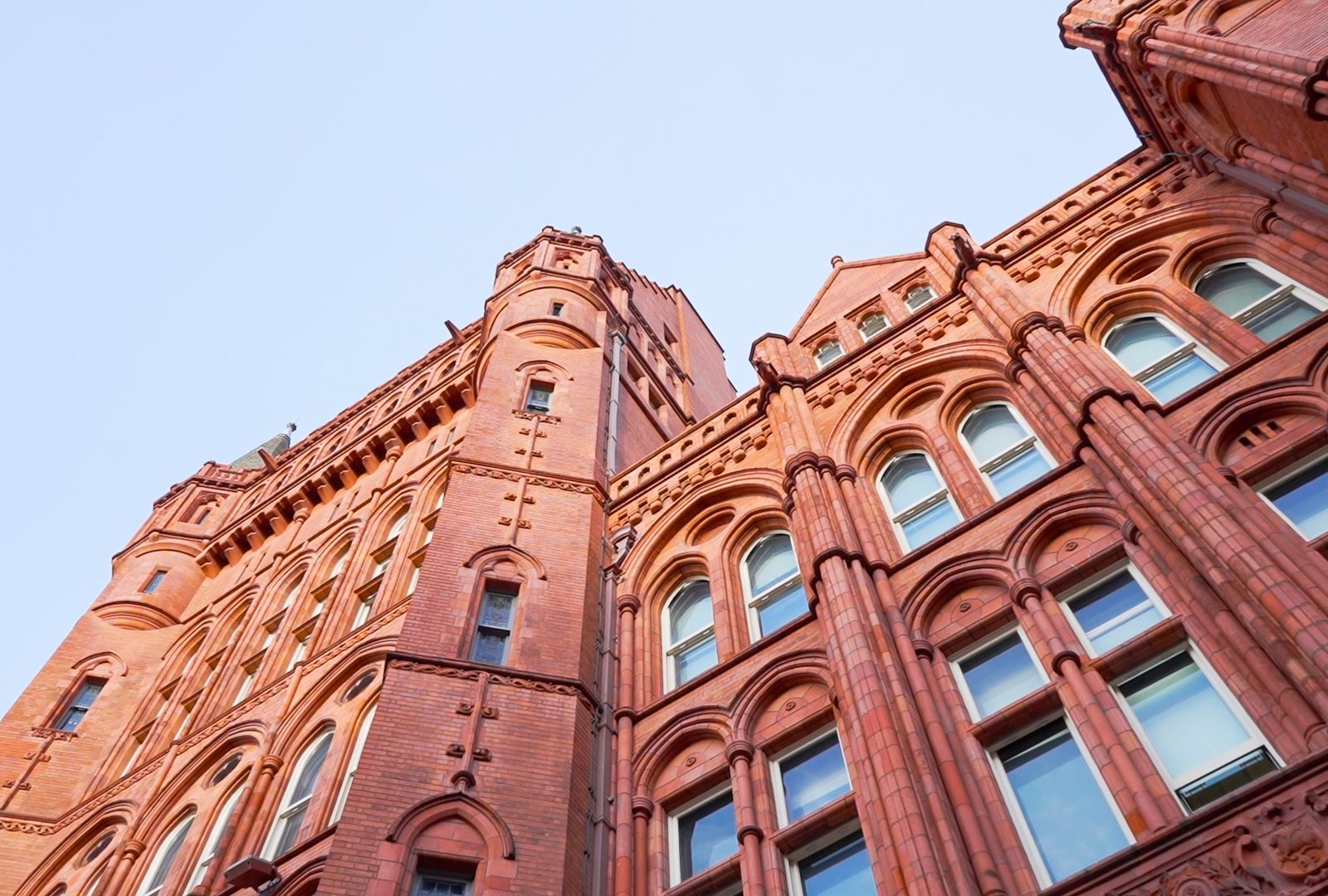
As we move to Holborn Bars, also known as the Prudential Assurance Building, we are greeted by a striking example of Victorian Gothic architecture.
Forming part of a bigger complex, the building was completed in 1879 and designed by Alfred Waterhouse, this building is often referred to as the ‘Red Castle’ due to its distinctive terracotta façade.
Holborn Bars is renowned for its High Victorian Gothic style. The use of red terracotta not only makes the building fireproof but also gives it a unique texture and colour.
The building features pointed arches, detailed mouldings, and an imposing presence that embodies the essence of Gothic architecture. It stands as a bold statement of the era’s architectural ambition and ingenuity.
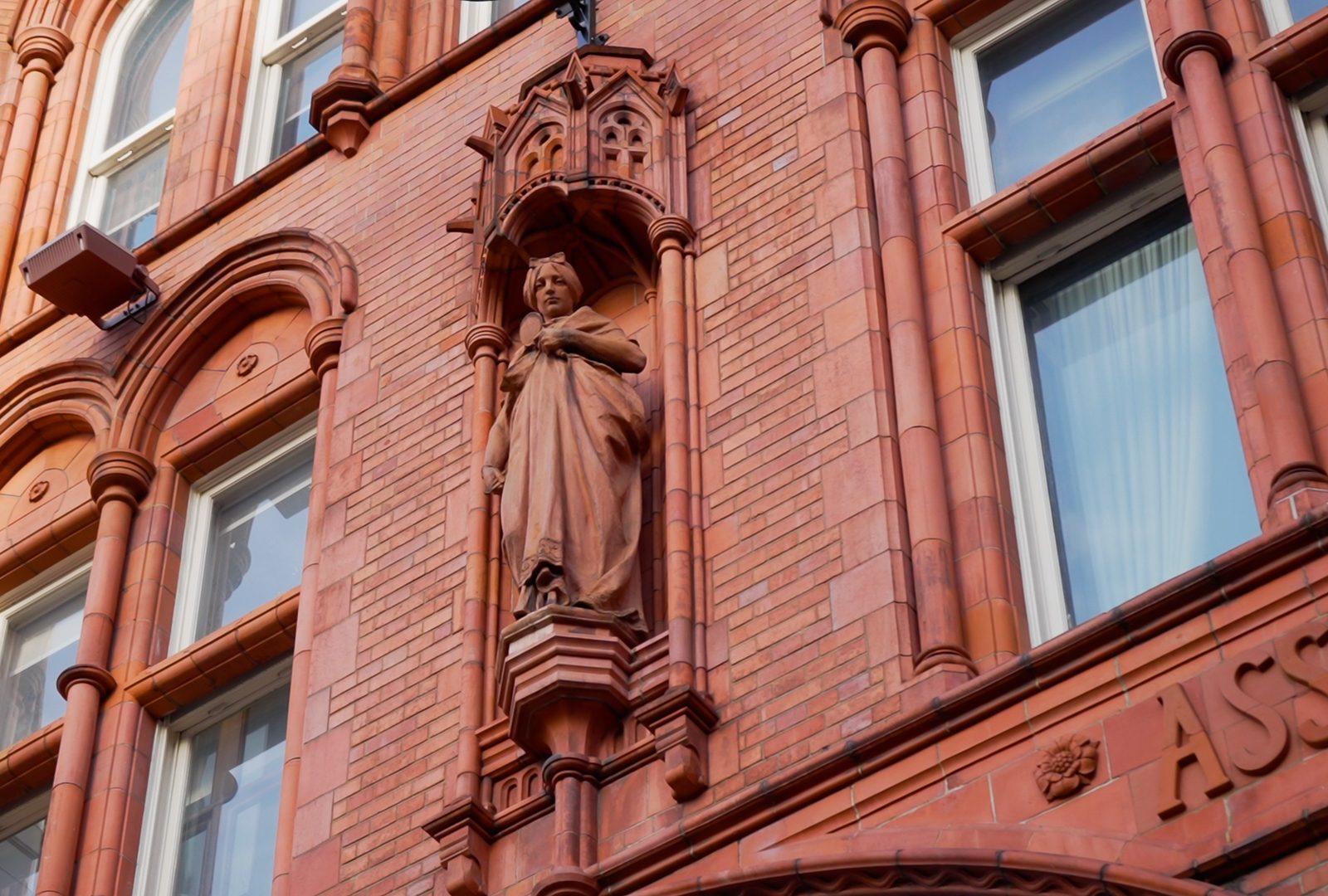
Stanhope House, 47 Park Lane
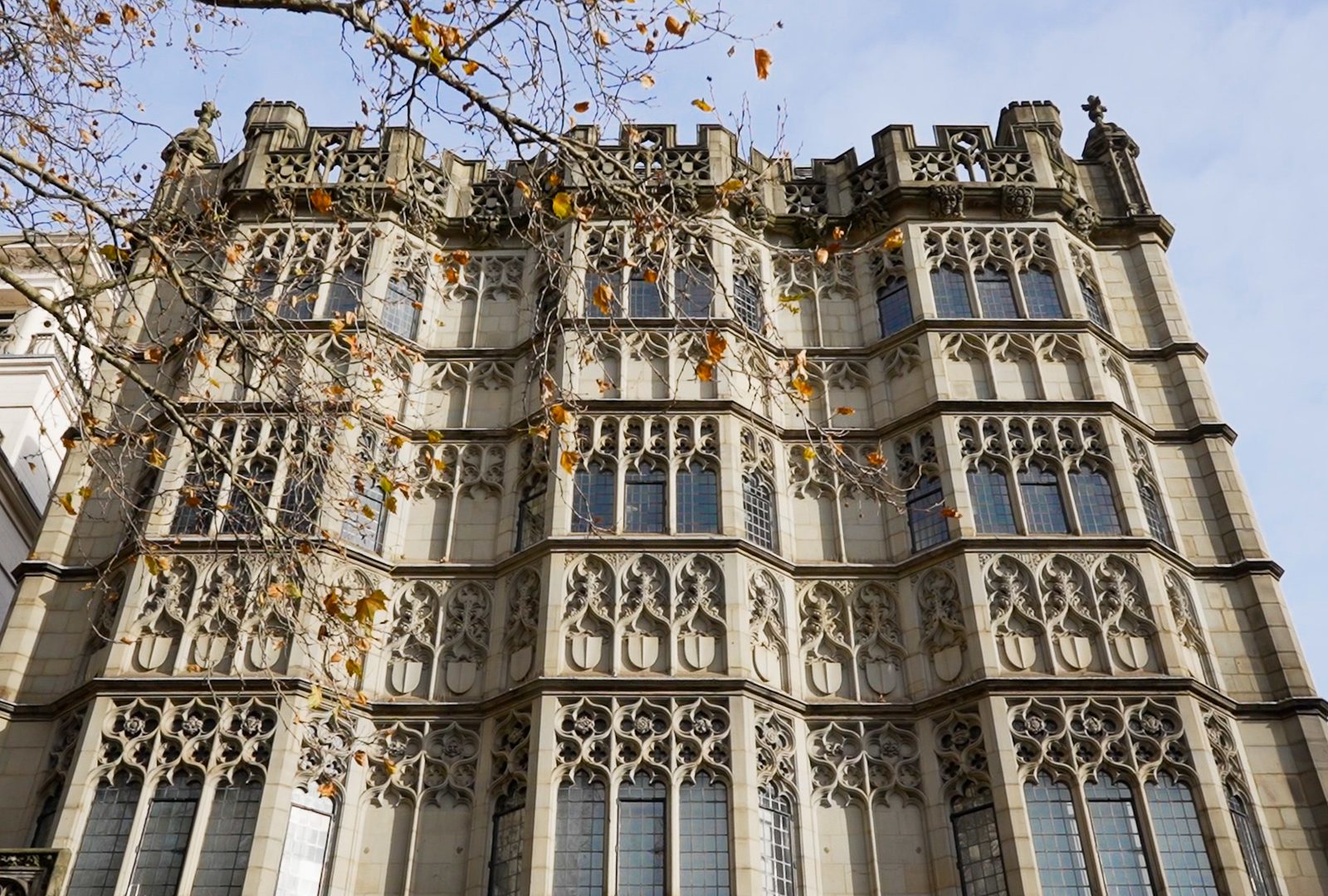
Moving towards the prestigious Park Lane, we find Stanhope House, a building that exudes elegance and grandeur.
While its Gothic elements are subtler than the previous examples, its design is no less impressive.
Stanhope House presents a more refined version of Gothic architecture. Its understated style is a testament to the versatility of the Gothic revival, showcasing how the style can be adapted to suit different tastes and purposes.
The building’s façade, with its clean lines and graceful proportions, offers a more modern take on the Gothic tradition.
The building is now home to some great workspaces, something we know a thing or two about here at One One One.
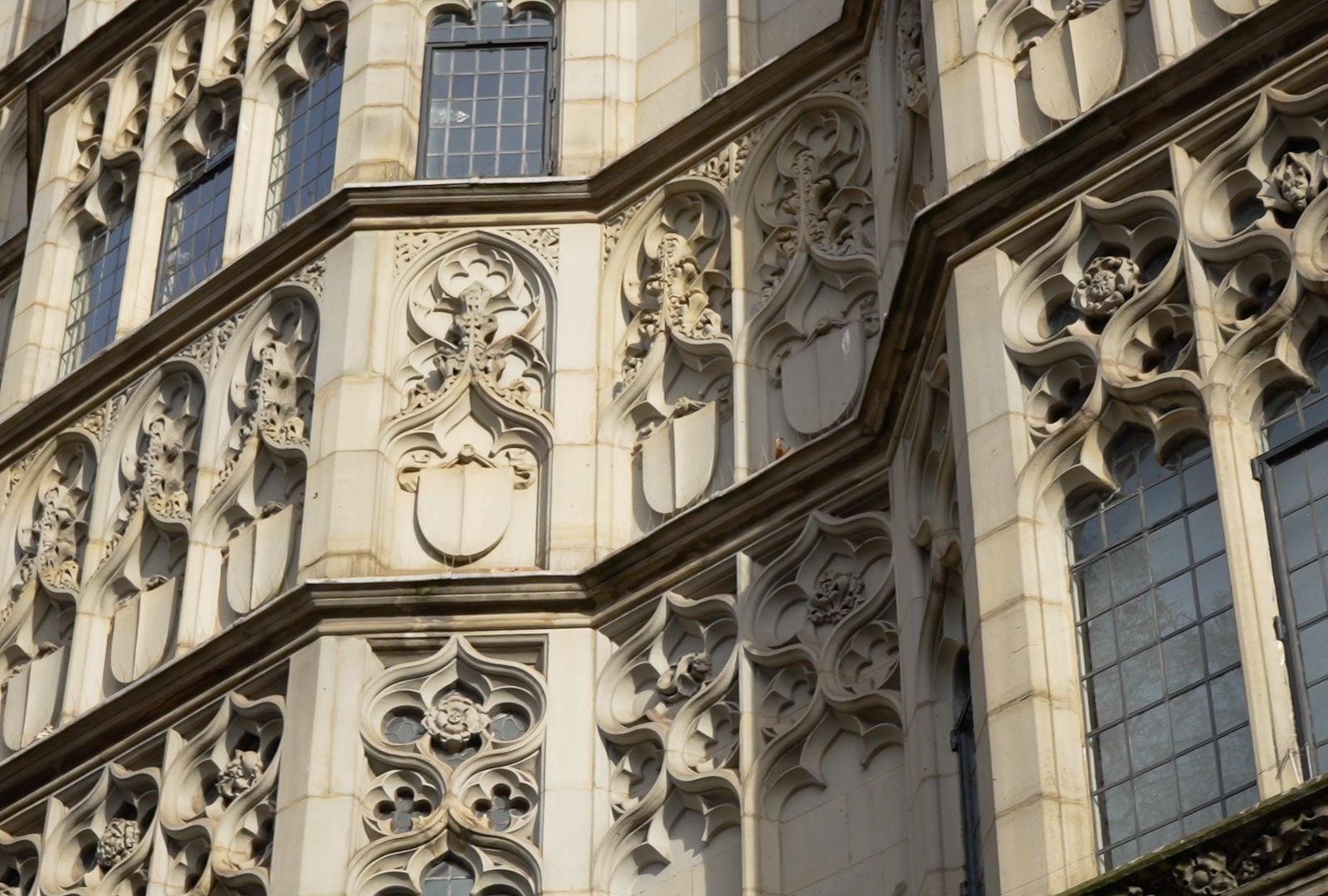
Minster Court, Mincing Lane
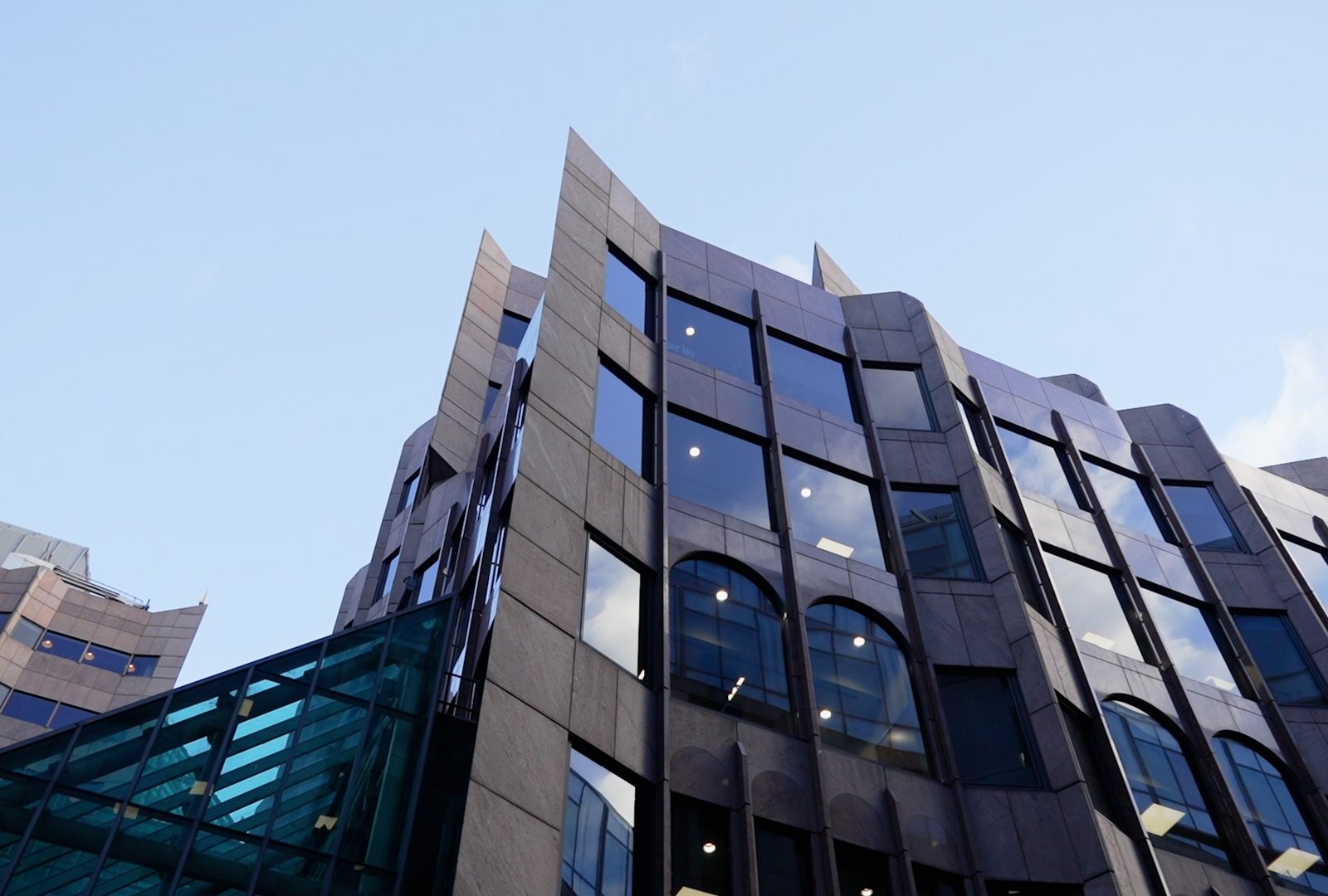
As we approach Minster Court, we are transported to a more contemporary interpretation of Gothic architecture.
Completed in the late 20th century, this building and office complex represents a modern take on the Gothic style, blending traditional elements with modern design.
Minster Court’s three imposing office buildings, with their steeply pitched roofs and ornate gables, create a striking silhouette against the London skyline.
The use of glass and steel, along with traditional stone, demonstrates how Gothic architecture has evolved while still retaining its core characteristics.
It’s a bold statement of how historical styles can be reimagined in a modern context and blends the two together seamlessly to stunning effect.
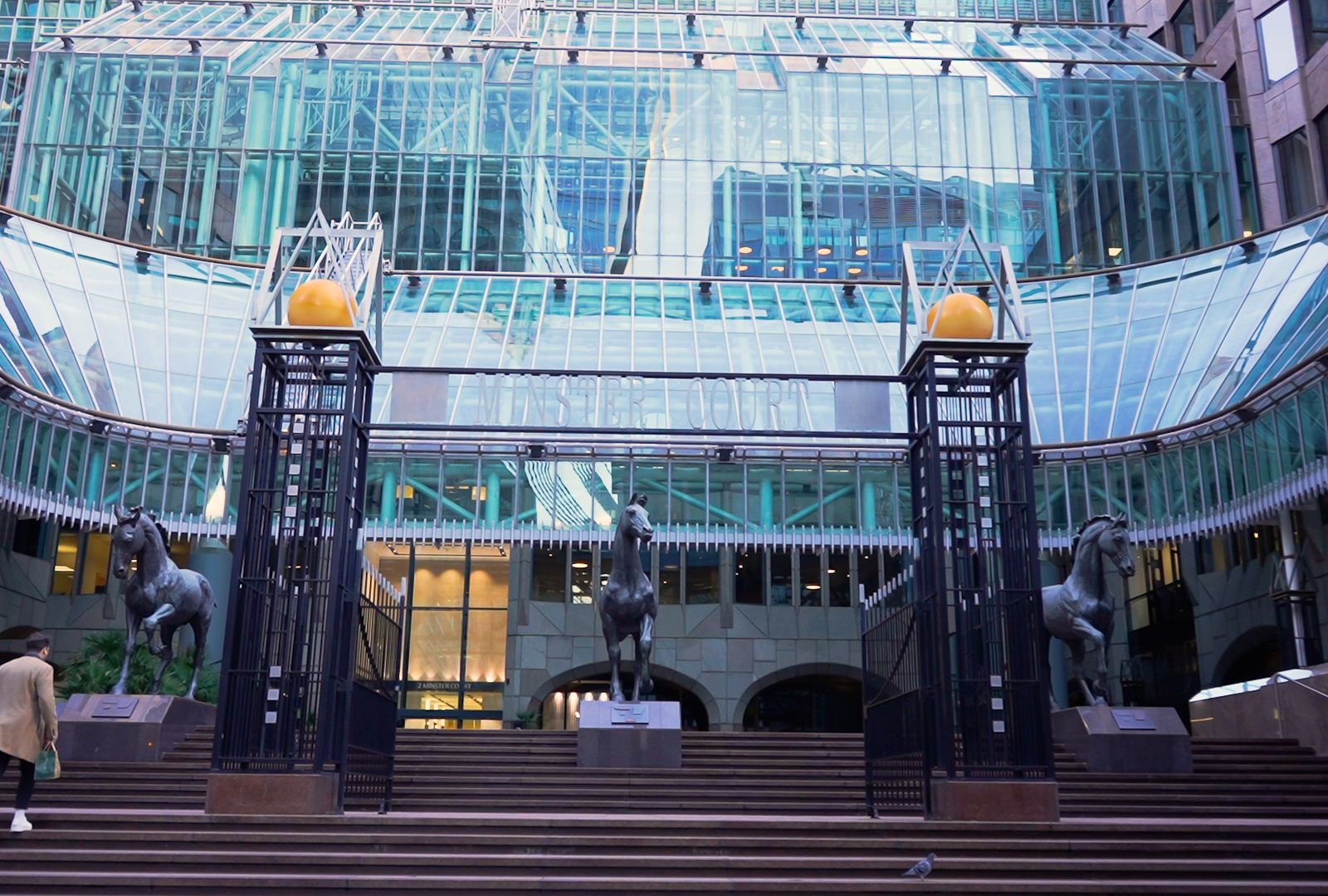
The Beauty of Gothic Architecture in London
Our tour of Gothic buildings in London reveals the city’s architectural diversity and its enduring love affair with Gothic architecture.
From Robert Lewis Roumieu’s imaginative creations to the modern grandeur of Minster Court, these buildings are always a delight to see, and shows the versatility and ingenuity that has formed a key part of the architecture of this city.
Looking through the four properties mentioned above, we’re reminded of the timeless appeal of Gothic architecture and its ability to adapt, inspire, and captivate.
As we mentioned throughout the blog, some of these buildings now contain office space, and if you were looking for somewhere for your business to call home in London, you’re in the right place.
Here at One One One, our agents have access to Every London Office, and can help pinpoint the perfect one for you and your business.
Want to know more? Get in touch with our team today or fill in our build your own office tool.
